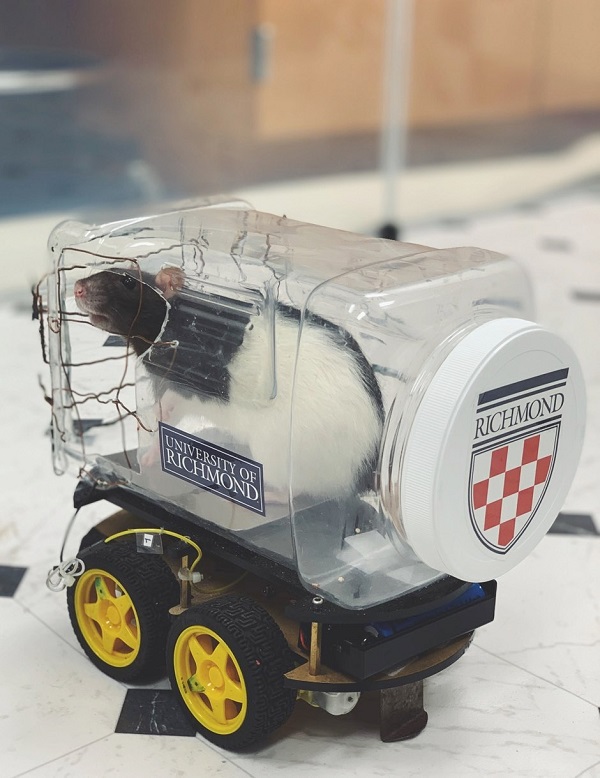Rat race
Dr. Edward P. Becker | TLT Automotive Tribology April 2020
Researchers use tiny creatures to master the art of driving.

Laboratory rats are learning to operate electric vehicles to pick up food. (Photo courtesy of Kelly Lambert/University of Richmond)
In the English language, the phrase “rat race” is commonly understood to mean a way of life in modern society, in which people compete with each other for power and money. However, scientists at the University of Richmond in Virginia may be about to give a new, and more literal, definition of the term.
According to a report in the New Scientist,1 actual laboratory rats have learned to operate electric vehicles to pick up food. This may mean that rats are now the first species on earth to adopt the electric vehicle as their primary source of motorized transportation. But don’t be looking on the open road for rat-driven vehicles just yet. The cars, so far, are clear plastic food containers outfitted with wheels and an electric motor. The rats drive by touching wires mounted at the front of the compartment to complete an electric circuit. Depending on which wire they touch, the car moves forward, or turns left or right.
The researchers have found a number of interesting results that seem to correlate with the experience of human drivers. For example, rats raised in a complex, stimulating environment learned to drive significantly faster than rats raised in a dull, boring environment. Early exposure to a learning environment seems to translate in a greater ability to learn as an adult.
More interesting to those of us who drive vehicles, however, is that the scientists were able to measure the levels of stress hormones in the rats, both before and after driving. Rats that learned to drive had significantly lower levels of the stress hormones after driving. But rats that were driven around in remote-controlled cars showed higher levels of stress. So the friction that occurs between the driver and passengers in a human-controlled vehicle seems to have a very close analogy in rats!
For the developers of autonomous vehicles, the lesson is clear. Humans, like rats, experience an increase in stress when riding in a vehicle controlled by someone (or something) else. Perhaps we will grow accustomed to the experience or, as in airline travel, learn to accept some level of stress in exchange for the practical result of getting where we want to go.
In the meantime, no word yet on whether the scientists plan to build multiple cars for the rats and have them actually race. This would seem to be the natural progression in order to improve their designs. Plus, the videos would be fun to watch!
Ed Becker is a Fellow and Past President of STLE. He is currently president of Friction & Wear Solutions, LLC and can be reached through his website at www.frictionandwearsolutions.com.
REFERENCES
1. Klein, A., “Scientists have trained rats to drive tiny cars to collect food,” New Scientist, Oct. 22, 2019, available here.